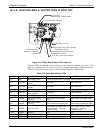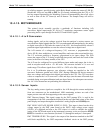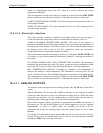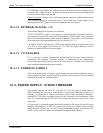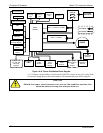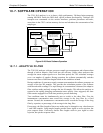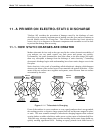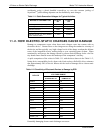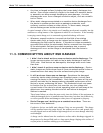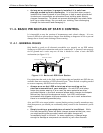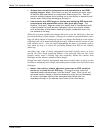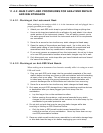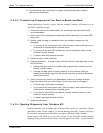
Principles Of Operation Model T101 Instruction Manual
276
10.7.3. TEMPERATURE AND PRESSURE COMPENSATION (TPC)
FEATURE
As explained previously, changes in temperature can significantly affect the amount of
fluoresced UV light generated in the instrument’s sample chamber. To negate this effect
the Model T101 maintains the sample gas at a stable, raised temperature.
Pressure changes can also have a noticeable, if more subtle, effect on the H
2
S
concentration calculation. To account for this, the Model T101 software includes a
feature which allows the instrument to include a compensation factor in the H
2
S
calculations that is based on changes in ambient pressure.
When the TPC feature is enabled, the analyzer’s H
2
S concentration is divided by a factor
called PRESSCO which is based on the ratio between the ambient pressure of the
sample gas and standard atmospheric pressure (Equation 10-5). As ambient pressure
increases, the compensated H
2
S concentration is decreased.
A)-HG(" 29.92
_SLOPESAMP_PRESSA)-HG(" SSURESAMPLE_PRE
PRESSCO
Equation 10-5
SAMPLE-PRESSURE: The ambient pressure of the sample gas as measured by the
instrument’s sample pressure sensor (see Figure 10-7) in “Hg-A.
SAMP_PRESS_SLOPE: Sample pressure slope correction factor.
Section 4.5 describes the method for enabling/disabling the TPC feature.
10.7.4. INTERNAL DATA ACQUISITION SYSTEM (DAS )
The DAS is designed to implement predictive diagnostics that stores trending data for
users to anticipate when an instrument will require service. Large amounts of data can be
stored in non-volatile memory and retrieved in plain text format for further processing
with common data analysis programs. The DAS has a consistent user interface in all
Teledyne API instruments. New data parameters and triggering events can be added to
the instrument as needed.
Depending on the sampling frequency and the number of data parameters the DAS can
store several months of data, which are retained even when the instrument is powered
off or a new firmware is installed. The DAS permits users to access the data through the
instrument’s front panel or the remote interface. The latter can automatically download
stored data for further processing. For information on using the DAS, refer to Section
4.8.
07266B DCN6485



